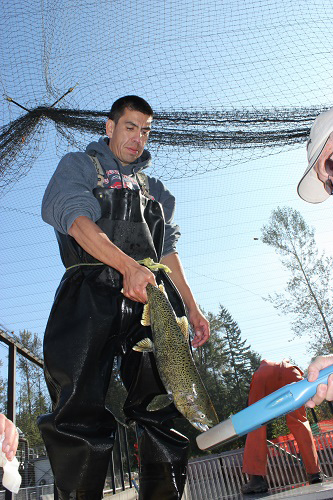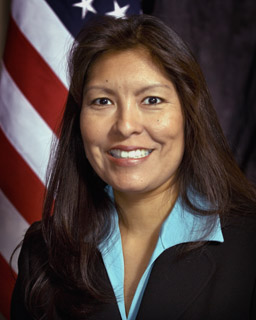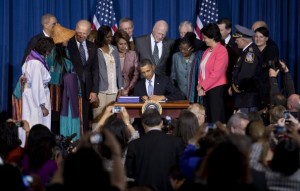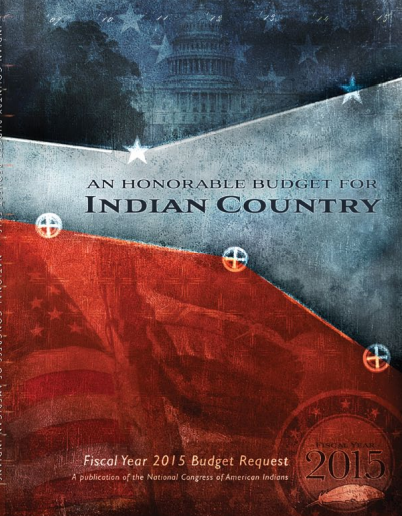By Ana Radelat, The Connecticut Mirror
Washington — The administration of Gov. Dannel Malloy has asked the federal Bureau of Indian Affairs to scrap proposed rule changes the state believes could lead to recognition of additional Indian tribes in Connecticut.
The BIA has been considering the rule changes for months. The state says the changes could open the door to large land claims and expanded Indian gaming in Connecticut. Yet Kevin Washburn, Assistant Secretary of Indian Affairs, has said he’s determined to fix what he’s called a “broken” federal recognition process.
The federal tribal recognition rules in place require a tribe to prove its continuous community and political authority since first contact with European settlers. Washburn’s proposal would change that to allow a petitioning tribe to demonstrate it has maintained a state reservation since 1934. Washburn‘s new regulation would also allow tribes that have been denied recognition to apply again.
“The proposed rules represent a dramatic departure from the standards and process governing acknowledgment decisions for nearly 40 years,” Connecticut Attorney General George Jepsen said in comments filed before a midnight deadline Tuesday. “If adopted as proposed, petitioners could gain recognition in circumstances completely at odds with fundamental principles of tribal acknowledgement. These proposals…are unjustified and should be rejected.”
A new, final Indian recognition rule will be posted within 60 days. It could be modified again based on the comments of the Malloy administration and others, including Connecticut’s tribes.
Gov. Malloy, the Connecticut congressional delegation and most of the state’s political establishment, have pushed back harder than anyone on the proposed rules, even after the BIA changed them to include a provision aimed at blocking three tribes that have long sought recognition in Connecticut — the Eastern Pequots, the Schaghticokes and possibly the Golden Hill Paugussetts.
The BIA had given the Eastern Pequot and Schanghticoke tribes acknowledgement, then withdrew it after an appeal by the state.
At the behest of Connecticut officials, the proposed rules were modified so those who opposed the tribes’ recognition previously would have veto power over a new attempt at recognition.
That infuriated Connecticut’s tribes.
“The BIA failed to consider the long, oppressive history of the state of Connecticut,” wrote Kathleen Sebastian Dring, an elder of the Eastern Pequot Tribal Nation, in her comments to the agency.
Dring told the BIA that, “The third-party veto undermines the BIA’s attempt to create an equitable and objective process for the tribes” and was “imposed by the BIA after political pressure from Connecticut.”
“As citizens [Eastern Pequot tribal members] are entitled to the equal protection of laws in accordance to the U.S. Constitution,” Dring said.
Chief Richard Velky of the Schaghticoke Tribal Nation told the BIA that giving third parties the right to object to new petitions for federal acknowledgement “does not, I believe, comport with the due process and equal protection principles of our Constitution.”
“Nor does the U.S. Constitution provide that a state and its political subdivisions may exercise an absolute veto over the exercise of constitutional authority vested exclusively in the United States government,” Velky wrote.
Meanwhile, Jepsen said the veto provision isn’t a comprehensive enough protection to keep the Connecticut’s tribes from suing the state if it doesn’t consent to recognition, and “the outcome (of the litigation) is uncertain.”
Jepsen also said he is concerned the proposed regulations wouldn’t block “splinter groups” of Indian tribes from seeking recognition.
Under the proposed rules, the Schagticoke Indian Tribe, a group of Indians that rejected the leadership of the Schagticoke Indian Nation, might be able to apply for federal acknowledgement – and since they were never denied recognition, no veto provision would apply.
Jepsen also called the proposed elimination of the Board of Indian Appeals, which allowed Connecticut to challenge the Eastern Pequot and Schaghticoke recognitions “patently unfair.”
The BIA had granted a Malloy administration request for more time to submit its public comments. The deadline was pushed back from Aug. 1 to Sept. 30.
The entire Connecticut congressional delegation signed a letter that supported the administration’s objections to the proposed recognition rules.
“We…agree the process should be improved,” the letter said, but it recommended more transparency and perhaps a bigger budget, instead of “weakening the longstanding standards for federal recognition.”
The letter backed all of the Malloy administration’s objections and asked the BIA to eliminate the proposal that allowed rejected tribes to petition again for recognition, because the consent requirement or third-party veto, would be challenged in court.
“We note that at least one party is objecting to the consent requirement, contending it may be unconstitutional,” the lawmakers’ letter said.
In all, 255 comments were filed. Many came from tribes and most, like the comment from the National Congress of American Indians, supported Washburn’s efforts.
“Connecticut politicians and their special interests seek to derail justice for Native Americans,” said an unsigned comment. “Please don’t allow the process to become politicized by special interests BIA. Stick to what you believe is fair to Native American tribes.”











